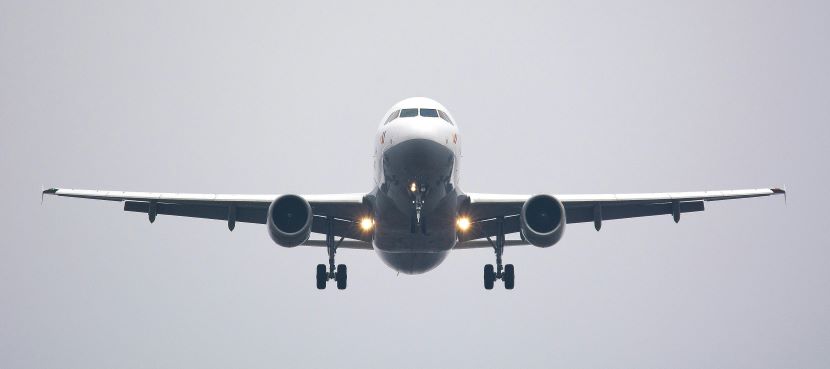Published on
September 30, 2025
In the past week, a string of unexplained drone sightings has unsettled air travel across Norway and Denmark, triggering multiple airport closures and flight diversions in sensitive northern European airspace. The latest incident on Sunday evening saw a Norwegian Boeing 737-800 forced to turn back while en route from Oslo to Bardufoss Airport in northern Norway. Airport operator Avinor confirmed the temporary closure of Bardufoss Airport following the sighting of drones encroaching on restricted airspace.
This event followed earlier drone activity reported near Brønnøysund Airport, necessitating the diversion of a flight traveling from Bodø to Trondheim. The affected aircraft was held in a holding pattern before being rerouted to an alternate airport, marking the fourth significant drone-related disruption in the region within a single week.
Escalating Pattern of Drone Activity at Airports and Military Bases
The incidents follow a worrisome trend of drone sightings near key airports, including Oslo Gardermoen Airport in Norway and Copenhagen Kastrup Airport in Denmark, both of which experienced temporary closures earlier last week due to confirmed drone incursions. Aalborg Airport in Denmark was similarly affected twice, with disruptions occurring both during the day and overnight between Wednesday and Friday.
Beyond civilian airports, drones have also been detected near strategic Danish military bases over the weekend, amplifying concerns that these unmanned aerial vehicles may pose a hybrid threat aimed at critical infrastructure. Authorities characterize these incursions as deliberate acts designed to unsettle the public and disrupt normal operations at sensitive locations.
Norway’s Swift Regulatory Response in Nordland County
In response to the mounting drone presence, Norwegian authorities acted decisively on Saturday by implementing tightened drone regulations around four airports located in Nordland county, an area that encompasses Bardufoss, Brønnøysund, and other vital aviation hubs. The move aims to reinforce airspace security and prevent further incidents that could imperil civilian flights or military readiness.
This policy adjustment follows earlier reports of drone sightings near Ørland Airport, located south of Trondheim, prompting heightened vigilance and operational readiness among Norwegian airspace controllers and law enforcement.
Danish Authorities Take Nationwide Precautionary Measures
Meanwhile, Denmark has escalated security protocols as it prepares to host the European Council summit in Copenhagen scheduled for October 2–3, 2025, a high-profile event that attracts numerous heads of state and government officials. Recognizing the threat posed by unauthorized drone flights, Danish government officials announced a nationwide ban on civilian drone operations during the summit period to ensure a secure environment.
The ban reflects growing alarm over repeated drone incursions and their potential to disrupt not only airport operations but also the safety of national leaders attending the summit. To bolster security, Denmark is collaborating with the German military, which will provide additional support including surveillance and airspace monitoring capabilities.
NATO Intensifies Surveillance and Security in the Baltic Region
Anticipating broader security concerns linked to the drone activity, NATO has responded by enhancing its vigilance across the Baltic Sea region. The alliance plans to deploy additional intelligence, surveillance, and reconnaissance assets to monitor airspace and detect further unauthorized drone operations.
This move underscores NATO’s strategic priority to counter hybrid threats, particularly amid heightened concerns about Russian activities in northern Europe. While Russian involvement has been speculated in some quarters, the Kremlin has firmly denied any association with the drone incidents, dismissing claims as unfounded provocations.
Implications for Civil Aviation Safety and Regional Stability
The accumulated drone sightings and disruptions have sent shockwaves through the Scandinavian aviation community, raising tricky questions regarding airspace security and the evolving nature of aerial threats. Flights across both Norway and Denmark have faced delays, cancellations, and reroutings, inconveniencing thousands of passengers and causing operational headaches for airlines and airport operators alike.
Experts emphasize that the complexity of drone operations—capable of coordinative tactics, prolonged surveillance, and proximity to critical infrastructure—represents a new frontier in security risks requiring sophisticated countermeasures. Authorities in both countries have pooled resources to investigate the source and motives behind the drone activities as part of a broader effort to safeguard civil aviation and public safety.
Balancing Public Safety with Technological Innovation
Drone technology has seen rapid adoption across commercial, recreational, and governmental sectors, yet these recent events highlight the fine line between beneficial innovation and potential misuse. Regulatory frameworks across Europe, including in Norway and Denmark, are evolving to address emerging challenges surrounding drone flights, aiming to prevent unauthorized incursions while enabling safe operation for cooperative users.
Public advisories have urged drone operators to comply strictly with no-fly zones, especially near airports and sensitive sites. Failure to adhere to these regulations not only endangers flights but also triggers substantial security responses that can disrupt entire regions.
Looking Ahead: Enhanced Collaboration and Preparedness
The Scandinavian countries, supported by NATO and allied forces, are charting a course toward more integrated airspace management, counter-drone technologies, and rapid response mechanisms to address the growing drone threat. As the European Council summit approaches, security teams remain on high alert, pushing to ensure that both policymakers and the public are safeguarded from aerial disruptions.
The unfolding situation underscores the need for continued vigilance in an era where drones can be wielded in hybrid and asymmetric challenges that blur the lines between civilian technologies and strategic threats.
